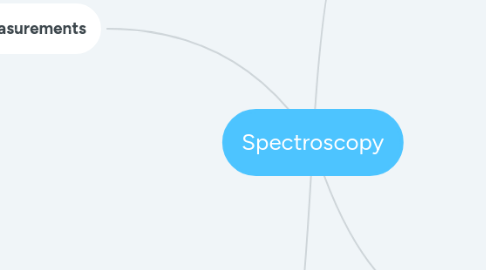
1. Methods of Measurements
1.1. Instrumental components
1.1.1. Light source:
1.1.1.1. Continuum of wavelengths from a black body source
1.1.1.2. Line sources from atomic lines or lasers
1.1.2. Wavelength selector:
1.1.2.1. Prisms to diffract light. Nonlinear diffraction with wavelength
1.1.2.2. Filters of colored glass or a medium with a bandwidth gap with the energy of the desired photon
1.1.2.3. Gratings act similar to a prism, but produce a specific wavelength much easier.
1.1.3. Monochromator
1.1.3.1. Selects for a narrow wavelength range using gratings and filters. Give linear dispersion.
1.1.3.2. Determines the resolving power between two wavelengths by the equation R = lambda / delta lambda = mN
1.1.4. Transducers
1.1.4.1. Thermal and optical systems that measure only one or more wavelengths.
1.1.4.2. Photomultiplier tubes increase sensitivity by increasing the number of electrons produced from a single photon.
1.1.5. Sample
1.1.5.1. Typically contained within a cuvette or some other contained, although flame systems have no container.
1.2. Raman
1.2.1. Measures the radiation that is scattered, and results from a change in the molecules polarizability from a moving bond
1.3. IR
1.3.1. Measures the changes in the dipole moment from vibration in bonds
1.4. UV-Vis
1.4.1. Measures the relaxation after direct excitation of electrons into higher energy states, such as AAS and AES, as well as fluorescence and phosphorescence
2. Signals
2.1. Transmittance and absorbances determine the light that passes through a sample, and the light absorbed
2.1.1. Generally assumed to follow Beer's law, A = Ebc

